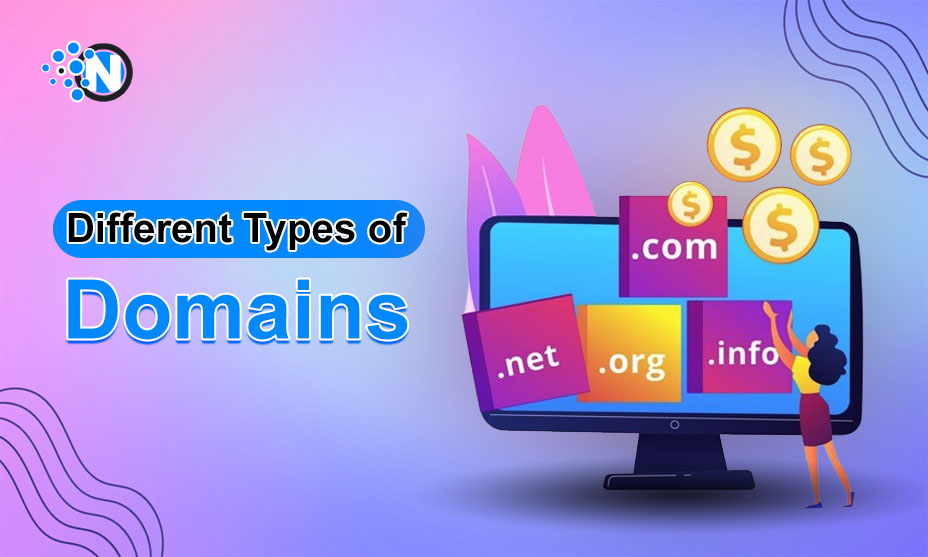What are Different Types of Domains?

Understanding different types of domains is essential to survive in this modern and highly competitive landscape. By getting the right domain name for your business, you can streamline other critical processes and take advantage of running your brand online. Additionally, a quality domain name can be your company’s trademark, helping you make your mark across the globe. This guide will look into the different types of domain names and their benefits so that you can have the best experience over the web, not only for your business but also for personal purposes.
What are Domain Names?
The domain names are the names you type in the search box of a search engine to access the web page directly. For example, when you type amazon.com in the search bar of a Google Chrome browser or Opera browser, you will directly access the dropshipping master. In this case, Amazon is the main brand name, and .com is the extension, which gives it a unique look. The same is done for building other websites and blogs so that every user can have a different experience with every website. With the rise in the competition, many domain names and types are generated that will surely deliver you brilliant and customized expertise that could benefit your business.
Types of Domain
In the under-section, we have enlisted some top domain types that you can own for your brand for better and more desirable outcomes.
1 – Top-Level Domains (TLDs)
Top-level domains are the highest level of domains in their respective hierarchy. They consist of unique strings found at the end of the name. Some top examples of TLDs are .com, .org, and .net. Besides giving a unique identity, every TLD has its own specified function. The .com domain is often associated with commercial websites. On the other hand, .org represents non-profit organizations like Wikipedia. Lastly, the .net domain represents the network organizations.
2 – Country Code Top-Level Domains (ccTLDs)
The Country Code Top-Level domains are the domains that are particular for a specific country or territory. Generally, they are two-letter extensions found at the end of the primary domain name. For example, .us is the extension specified for the United States. Similarly, .uk, .ca, and .jp are used for the United Kingdom, Canada, and Japan respectively. Thus, ccTLDs are used to signify the website’s connection to a particular geographic location.
3 – Generic Top-Level Domains (gTLDs)
Generic Top-Level Domains, more often called as gTLDs are the broader extension as compared to the ccTLDs. Moreover, they are not designated to a particular country or nation. Instead, they are like the TLDs in their reach and expansion. Some of the common generic TLDs are .blog, .app, and .guru. Although they are not widely popular, you can get more flexibility in domain naming. Above all, you can use them to categorize your site into different sections.
4 – Second-Level Domains
The second-level domains come before the top-level domains. However, their importance is more significant than the TLDs. The main reason is because they are the representatives of the brand associated with a particular domain. Let’s take an instance of the “example.com” domain. In this name, the “example” is the second-level domain. While selecting the domain name for your company’s site, you must ensure that it resonates with the brand’s name, purpose, and content.
5 – Subdomains
In the gTLDs, we talked about using them to segment a website. The more effective strategy to perform this activity is by using the subdomains for the primary name of your website. Generally, subdomains are the prefixes added before the second-level domain to describe a particular category or section. Thus, they are useful to separate different entities inside a larger domain. For example, in “blog.example.com,” the “blog” is the subdomain of the main domain.
6 – Internationalized Domain Names (IDNs)
The Internationalized Domain Names facilitates Internet accessibility for non-English audiences. Thus, they promote a more inclusive environment allowing all users to find the data over the web and use it for personal purposes. The IDNs support non-ASCII characters that allow the representation of the website in various scripts and languages. As a result, your site will have increased visibility across the planet to grab the maximum traffic possible.

7 – Premium Domains
Premium domains look similar to the general names but are very precise, short, and memorable. Thus, they deliver more brevity and relevance and are considered more valuable. Generally, these names are short, easy to remember, and may contain popular keywords. Hence, their prices are pretty much higher than normal. Nevertheless, acquiring them will promise to deliver incredible advantages which could be impossible otherwise.
8 – Sponsored Top-Level Domains (sTLDs)
Sponsored Top-Level domains are the specific domain extensions that are sponsored by private or public organizations. Generally, the sTLDs receive sponsorships from their relevant industries or communities, making the results more precise and consistent. The primary purpose of such domains is to create a niche online space. For example, the .gov is for government entities. On the other hand, the .edu domains are specified for educational institutions.
9 – Reserved Domains
Reserved domains are the domains that are not allowed to be registered by the general audience. They are specified for several critical factors and are often illustrative and exemplary for educational purposes. In this guide, we often utilize the “example.com” to showcase different types of domains. It is the best representation of a reserved domain, as no one can own it, but all people can use it in their documents.
Final Verdicts
In this highly competitive world, it is crucial to understand different types of domains and their purposes. Whether you are establishing a business or personal website over the web, finding the right domain name is always necessary. You can choose from the widely popular .com domains to new gLTDs to survive in this dynamic business landscape. Furthermore, you must stay informed about the latest developments and changes in the infrastructures of domain naming to dominate the competitors effortlessly and effectively.




